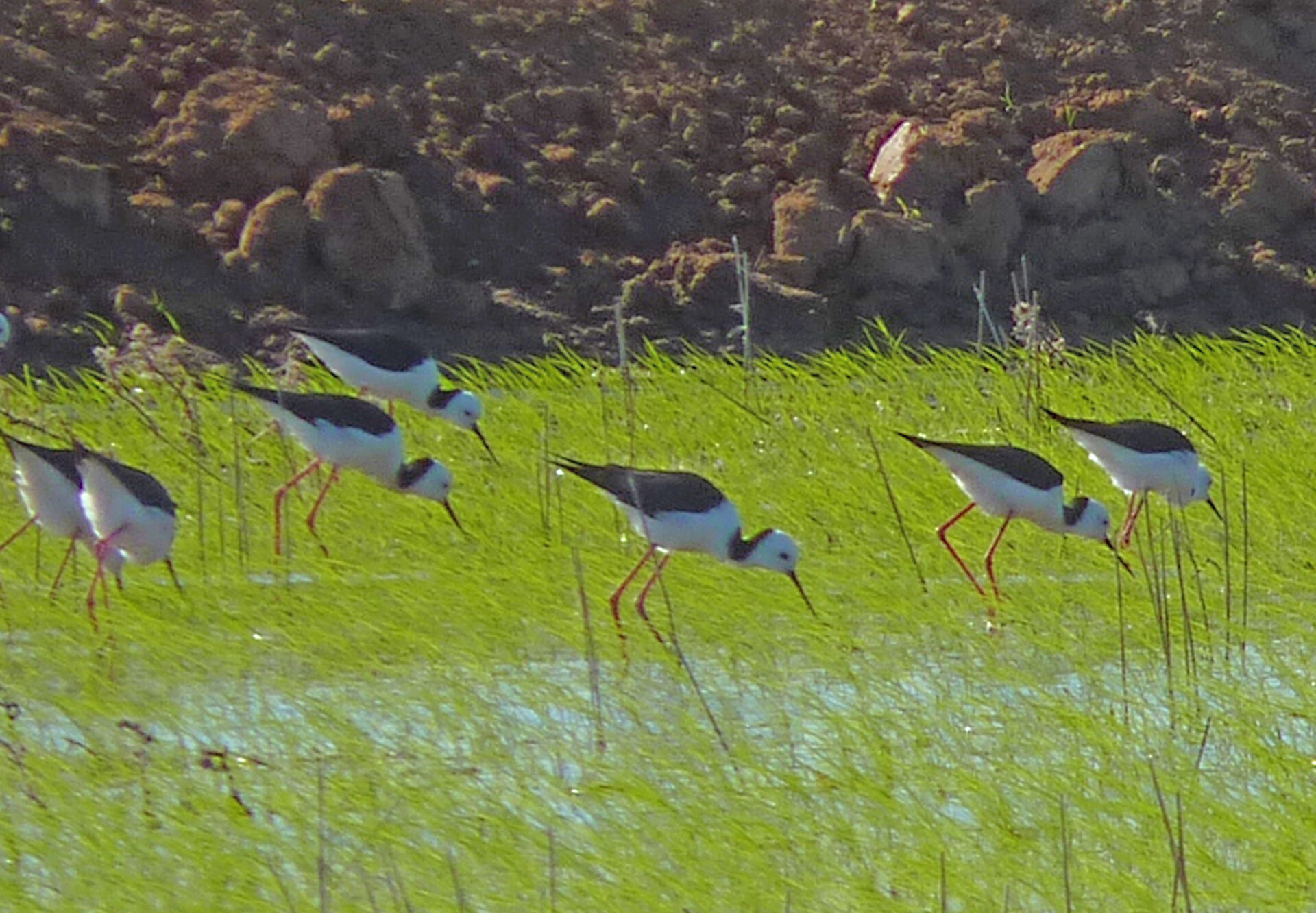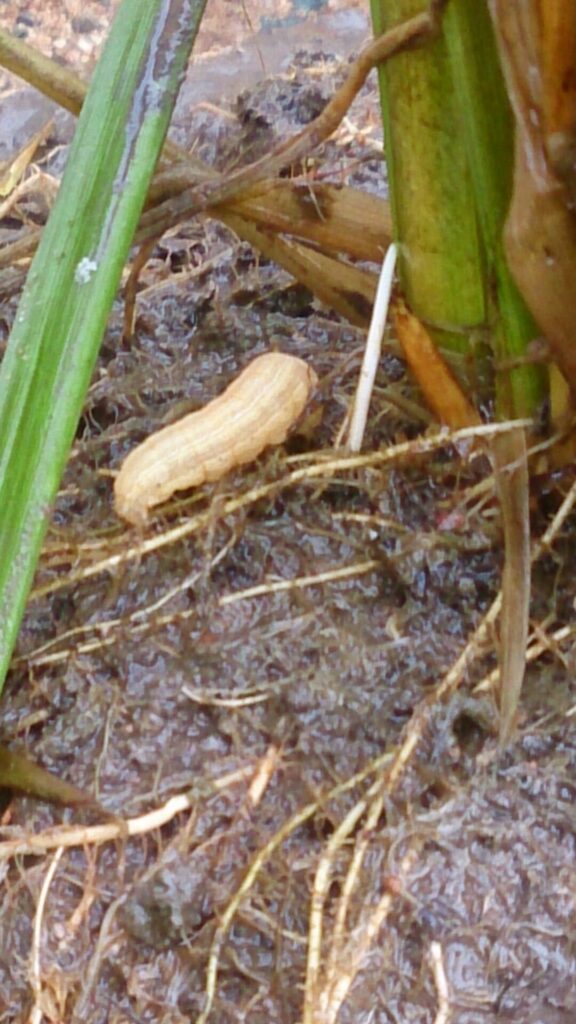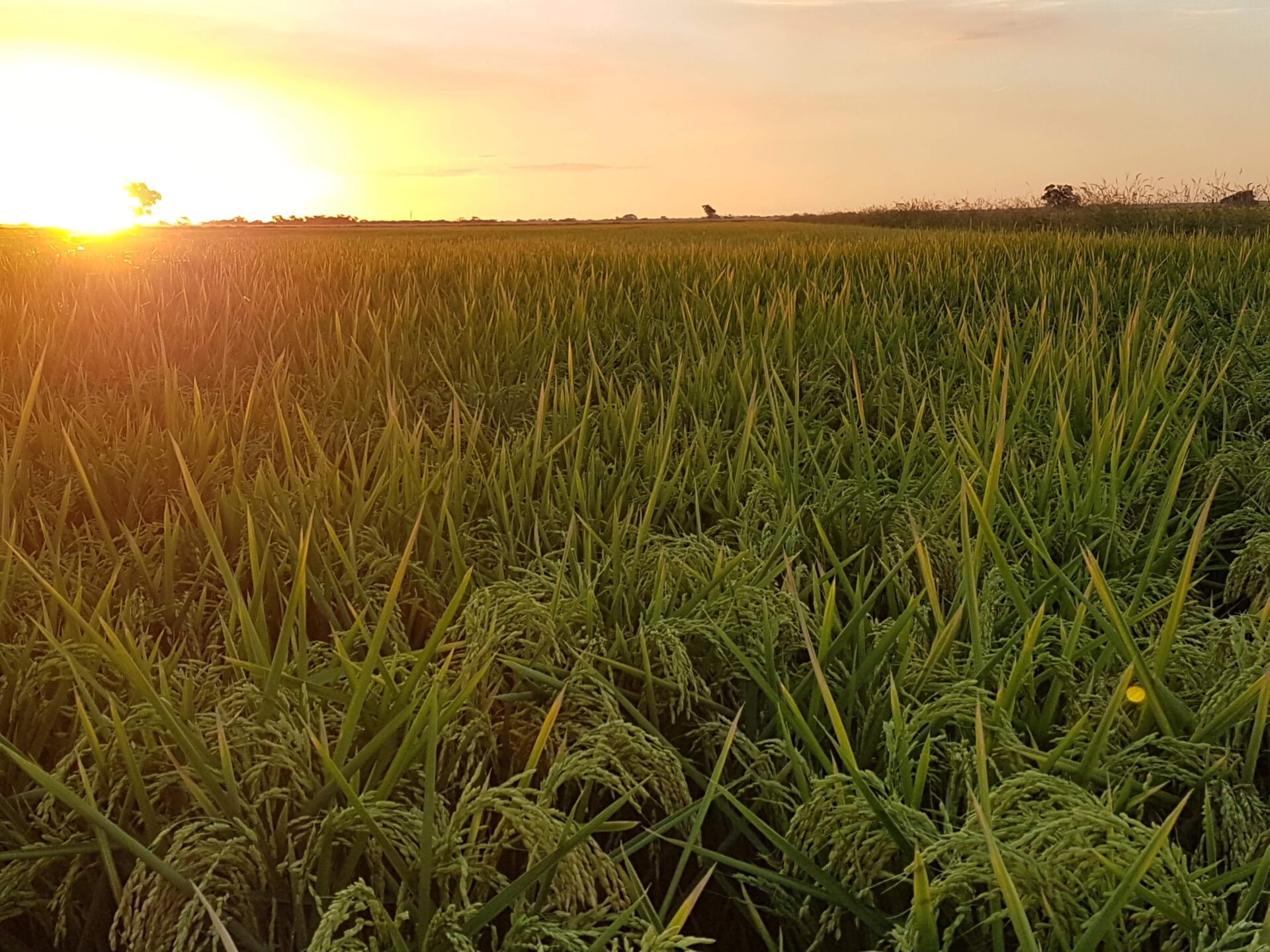Vermiwash in rice: the biological edge
Introduction
The southern Riverina offers ideal conditions for growing rice – hot with low humidity, which leads to minimal disease pressure compared to tropical climates. Australian rice growers are global leaders in water-use efficiency, using 50% less water than the global average to produce a kilogram of rice. Yet rice has often been labelled a high-input crop, especially in terms of fertiliser and water use. But that narrative is changing.
Having grown up on a rice farm and managed my own crops for nearly a decade, I’ve seen firsthand how rice not only delivers a high yield of staple food per megalitre, it also creates thriving wetland habitats for native wildlife. As water affordability tightens and tropical disease pressure limits northern expansion, the question becomes: could biology be the edge Aussie rice needs?

Pied stilts thriving in an early stage rice crop.

Rice crops are alive with a diversity of insects, reptiles and birdlife.
What is a vermiwash?
A vermiwash is the nutrient-rich liquid collected from vermicomposting beds inhabited by composting worms. This liquid is made up from the secretions and excretions from composting worms, and contains –
- A diversity of microbes
- Plant available nutrients
- Antimicrobial peptides and vitamins
- Amino acids
- Plant growth hormones
Vermiwash as a foliar to increase nutrient uptake
Field trials using foliar applications of vermiwash on rice crops found that amounts of as little as 5% vermiwash outperformed controls, including the following results –
- Application of vermiwash at tillering and flowering significantly increased plant height, tiller number, dry matter and grain yield1
- Application of vermiwash at tillering and flowering improved Nitrogen, Phosphorous and Potassium uptake1
- Foliar application of vermiwash increased all the growth and yield attributes tested (tillers, grain quality, yield)2
- Combining recommended N:P:K fertilisers with 5% vermiwash foliar spray remarkably increased productive tillers, test weight, grains per pinnacle, grain and straw yield3
With rice being a high user of macro nutrients, finding solutions to increase the uptake and efficiency of fertiliser use is critical to any rice grower’s budget.
Vermiwash for disease and pest control in rice
A 2025 study from Eagerton University in Kenya compared vermiwash to Trichoderma species (fungi species used in biological control), against the fungus that causes rice blast in rice crops. The trials concluded that a 10% vermiwash dilution alone inhibited rice blast growth by 72.81%, outperforming Trichoderna and chemical fungicides.
Vermiwash is rich in decomposer bacteria, mucus, vitamins, minerals, hormones, enzymes and antimicrobial peptides, making vermiwash an effective soil pest and pathogen suppressor. These components help create an unfavourable environment for pathogens, allowing beneficial microbes to thrive.
Vermiwash has also been shown to have antifungal and pest-repelling properties, helping inhibit the growth of harmful fungi and to repel pests.5
In the southern Riverina, army worms send a shiver down every rice farmer’s spine. When applied to crops, vermiwash increases plant photosynthesis, which in turn increases plant Brix. Crops that have a high Brix reading are high in complex sugars, and these plants cannot be digested by insects – such as army worm. This video explains the science behind why insects do not attack healthy crops.

Using a vermiwash in rice – Practical tips
NutriSoil Biological Solution is a premium vermiwash. Our vermiwash is recycled through our unique vermiculture recycling system, resulting in a concentrated solution for agricultural use.
In Australia, field applications and trials using vermiwash in rice crops are limited; as a result, the beneficial effects of active soil biology in rice production are similarly limited. However, by applying knowledge gained from global research trials and our own knowledge of using NutriSoil in cropping systems, a recommended program could include –
- Coating seeds in NutriSoil Biological Solution prior to sowing – 5L per tonne. Supporting the development of the biology around the root system of the seed (speak to the NutriSoil team about how you can achieve this).
- Application of 5L per Ha of NutriSoil at tillering and flowering/panicle initiation. Increasing the efficiency of nutrient uptake will allow a reduction in N:P:K rate (speak to the team about foliar application of nutrients pre-flooding).
- Buffer any herbicides or pesticides with 1L per Ha or 1L per 70L of solution. This will aid in the recovery of rice plants, as NutriSoil is abundant in amino acids that will help the plant recover quicker, and contains surfactant qualities to increase chemical efficacy.
Best Practice Tips
- Jar Test first – perform a jar test prior to tank mixing chemicals with NutriSoil to ensure compatibility with any chemicals you intend to mix (the last thing you want is a whole tank of goop!)
- Aim for leaf coverage, spray early morning / late afternoon to avoid leaf scorch and improve uptake
Final Note
Soil biology is greatly influenced by farm management practices (e.g., grazing management, history of chemical use, tillage programs, cropping rotations, etc.), all of which contribute to soil biological activity. While NutriSoil Biological Solution is not a silver bullet, it is a great place to start building resilient and vibrant plants that have the vigor to counteract environmental challenges better.
Australian rice growers are already setting the global benchmark for yield and quality. As our understanding of biological inputs deepens, it’s becoming clear: biology isn’t just a bonus, it’s a game-changer.
Tools like vermiwash offer a powerful way to enhance plant health, boost nutrient efficiency, and build natural resilience against pests and disease. In a system where every megalitre counts and quality drives profitability, biological solutions can help farmers grow smarter, not harder.
Could biology be the next tool in taking Aussie rice farmers to the next level!
References
- https://www.researchgate.net/publication/370479337_Influence_of_Vermiwash_on_Growth_Yield_Attributes_and_Nutrient_Uptake_of_Rice
- Acta Scientific (2019) – “Impact of Organic Foliar Nutrition and its Efficacy on Rice”- http://www.actascientific.com/ASAG/pdf/ASAG-03-0647.pdf
- Effect of organic foliar nutrition on the productivity of rice (Oryza sativa L.) https://horizonepublishing.com/journals/index.php/PST/article/view/8412?utm_source=chatgpt.com
- Antifungal activity of Trichoderma species and vermiwash against rice blast fungus (Magnaporthe oryzae) https://academicjournals.org/journal/AJAR/article-full-text-pdf/FE8897C73334
- Vermiwash: A Powerful Agent for Disease and Pest control in Agriculture https://nutrisoil.com.au/vermiwash-a-powerful-agent-for-disease-and-pest-control-in-agriculture-2/

